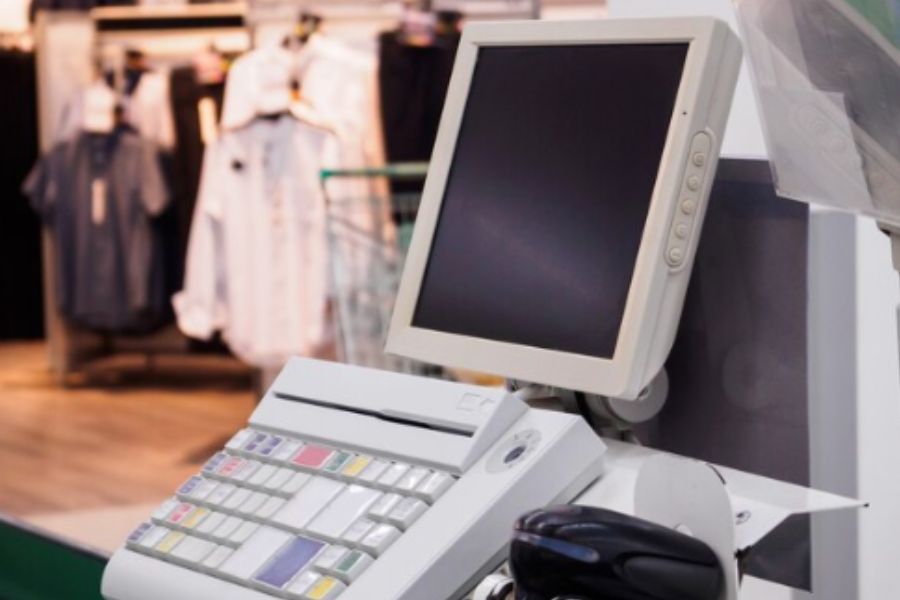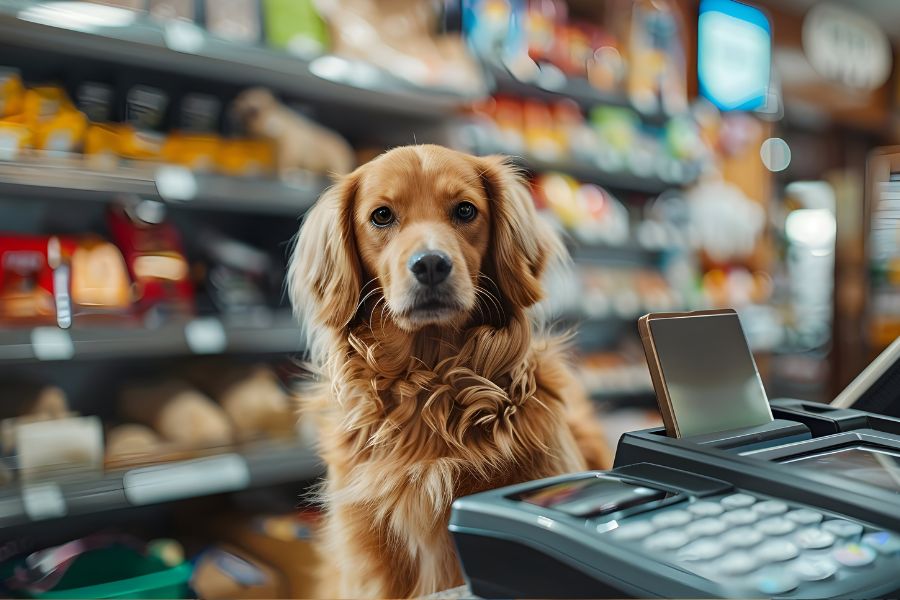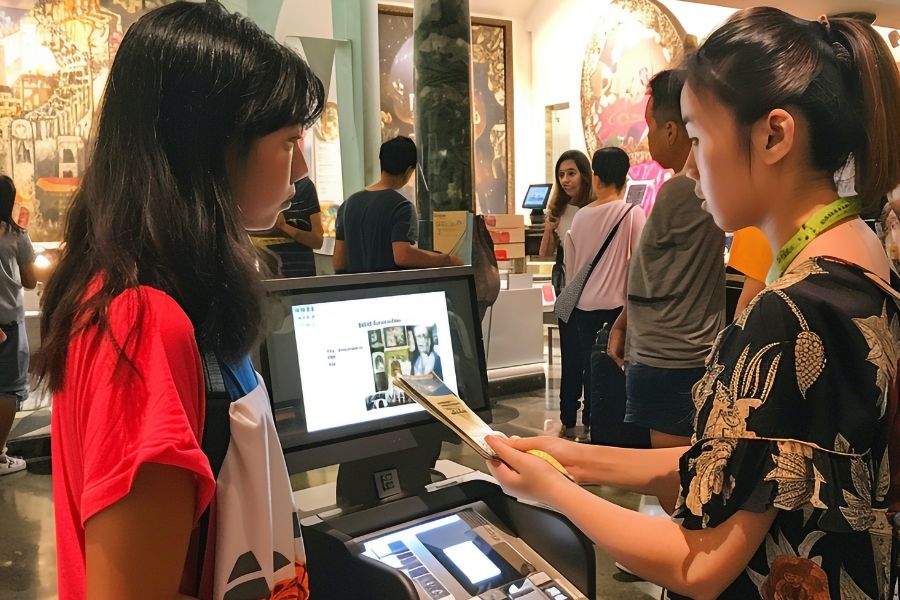Managing an antique mall requires a clear operational structure that respects vendor independence while maintaining control over the entire business. A well-implemented POS (Point of Sale) system is essential for achieving this balance. It supports numerous transactions, accommodates various inventory sources, and facilitates multi-party accounting processes without adding unnecessary complexity. This article outlines key elements for setting up an antique mall POS system. A POS system for an antique mall is not a simple plug-and-play solution; it becomes an operational backbone, influencing vendor satisfaction, customer experience, and long-term business scalability.
Highlights:
- Running an antique mall means balancing booth rentals, consignment sales, and dealer turnover while curating diverse inventory that keeps shoppers engaged and coming back.
- Setting up a POS system for an antique mall involves choosing the right vendor, arranging hardware, preparing legal and financial groundwork, training users, and testing thoroughly before launch.
Understanding the Antique Mall Environment
The global collectibles market was valued at USD 294.23 billion in 2023 and is projected to grow at a CAGR of 5.5% from 2024 to 2030.

Within this dynamic market, antique malls provide a distinct environment where independent dealers shape an ever-changing landscape of history, art, and collectibles. Success in these spaces hinges on selecting the right setup, managing inventory effectively, and adapting to the evolving participation of both dealers and customers.
- Booth Rental vs. Showcase Rental: Booth rental grants dealers more space for creative layouts and larger merchandise, allowing for full-room displays that invite customers to linger. Showcase rental suits items that demand closer security and tighter curation, such as jewelry and small antiques. Each path demands careful thought about how goods are arranged, priced, and refreshed over time.
- Consignment Sales: Consignment agreements tie dealer earnings directly to sales outcomes rather than fixed rent. Careful selection, smart pricing, and quick adaptation to customer demand all play a part in building success under this model. Every piece placed on consignment must work hard to draw attention and move quickly.
- Inventory Diversity: A broad and fresh selection of merchandise draws more eyes and keeps shoppers curious. Dealers who combine high-demand items with unexpected finds build a stronger pull for returning customers. Constant sourcing, seasonal rotation, and a keen eye for trends shape the most magnetic booths and showcases.
- Dealer Turnover: Changes in the dealer lineup refresh the mall’s atmosphere, inviting repeat visits and keeping energy high. Long-standing dealers create continuity, while new faces introduce variety. Dealers who stay competitive watch the shifting environment closely, adjusting their stock and approach to stay in step with the evolving crowd.
Antique malls thrive on diverse vendors and ever-changing inventory. An antique mall POS system simplifies daily operations by managing transactions, tracking inventory, and supporting vendor coordination. It helps maintain accurate records and provides insights into customer behavior. Implementing a reliable POS system allows for smoother sales processes, improved vendor relations, and a stronger overall shopping experience, helping your antique mall stay competitive and organized.
Essential POS Features for Antique Malls
Choosing an antique mall POS system requires attention to the unique demands of a shared retail space. The right tools must support the diverse needs of vendors while keeping operations smooth for staff and fair for customers. Every function should align with the daily reality of selling one-of-a-kind items across dozens, sometimes hundreds, of independent dealers.
- Dealer/Vendor Sales Tracking: Tracking sales by vendor builds the foundation for fair transactions. Each sale must connect directly to the responsible dealer without extra steps, so reporting stays clean and disputes stay rare.
- Commission and Payout Automation: Automated commission handling frees mall owners from tedious calculations at month-end. Dealers can expect accurate payments without the delays or miscalculations that damage trust over time.
- Calculate Different Commission Rates by Vendor: Vendor-specific commission settings protect agreements tailored to each dealer’s arrangement. Some sellers might require a lower rate for high-end items or higher volumes, while others operate under standard terms.
- Detailed Item Descriptions: Full item descriptions at the register protect everyone involved. Listing attributes like maker, age, damage, or provenance on sales records adds weight to every transaction and keeps the mall’s reputation strong.
- Price Tagging with Vendor Codes: Price tags linked to vendor codes prevent confusion when merchandise changes hands. Staff can match items to dealers quickly, buyers can check out faster, and end-of-day reporting stays organized.
- Tax Customization: Antique malls must juggle different tax scenarios depending on item type and regional laws. A system that allows item-level tax rules prevents errors that could later cause compliance problems.
Layaway and Holds: Layaway programs and item holds encourage buyers to commit even when immediate payment is not possible. Tracking deposits, payment dates, and pickup deadlines through the POS keeps these sales active without manual paperwork.
Setting Up an Antique Mall POS System
Choosing the Right POS Vendor
The search for a vendor must center on experience with multi-seller spaces. Systems built for simple stores miss the layered needs of antique malls where sales splits, partial payments, and mixed-tax transactions are the norm. Every conversation with vendors should uncover real-world examples, not just polished demos.
Price alone means little if the platform fails to match operations over time. Contracts must guard against hidden customization costs, painful migrations, or hardware traps. Mall operators who rush into agreements often find themselves trapped in workflows that slow growth and create dealer dissatisfaction.
Hardware Setup Essentials
With large footprints, heavy customer traffic, and the need for reliable transactions across scattered points, cash drawers must handle constant use, scanners must read varied tags, and receipt printers must produce clear records without fail.
Network reliability forms the backbone of any antique mall POS system. Relying on Wi-Fi alone invites unnecessary risks. Register stations should connect through wired networks wherever possible to prevent service interruptions that could damage relationships with dealers. Ignoring the physical structure of the mall can result in equipment breakdowns, lost sales, and operational setbacks when stability matters most.
Legal and Financial Setup
Every dealer arrangement needs a signed agreement spelling out commissions, liabilities, and payment timing in plain terms. Antique malls face unique sales tax obligations, often acting as the tax collector for a wide network of independent sellers. State or municipal rules must be met from day one.
Financial systems must keep dealer funds isolated from mall operating accounts to avoid legal exposure. Regular reconciliation builds transparency and shields the mall against internal errors, vendor disputes, and regulatory actions. Weak financial controls quickly poison vendor trust and attract government scrutiny.
Prepare for Staff and Vendor Use
The antique mall POS system becomes reliable only when people trust their own hands on the controls. Staff need full familiarity with item entry, sales processing, refunds, layaway management, and multi-vendor transactions. Training should not depend solely on manuals or brief demonstrations. Staff must experience tasks under realistic conditions, working through both normal operations and common mistakes without outside correction. Confidence built in practice sessions carries into live operations.
Vendors bring a second layer of complexity. Unlike regular retail, antique sellers often deal with unusual items needing custom codes, detailed descriptions, or special tax handling. Systems built around standard barcodes often confuse vendors unless training accounts for the realities of vintage sales.
Every vendor must understand tagging methods, pricing expectations, and inventory intake procedures to avoid confusion on opening day. Teaching vendors requires patience, clarity, and real attention to the nature of their goods.
Testing Before Launch
A system that passes simple trial runs rarely survives customer pressure without deeper preparation. Testing must cover full sales cycles under stress from multi-vendor purchases to partial returns and broken transactions. Price overrides, split tenders, and last-minute discount requests need simulation. Delays in card approval or scanner failures must be tested with real timing, not theory. The goal of testing is to find what breaks under strain, not to confirm what works in ideal conditions.
Every corner case deserves attention: handling expired layaways, correcting sales mistakenly attributed to the wrong vendor, and printing duplicate receipts on demand. No system flaw should meet a live customer first.
If internal tests feel easy or predictable, they miss the real-world edge cases that create long lines, angry buyers, and confused vendors. Stress testing sharpens both system resilience and staff reaction speed before the doors ever swing open.
Final Pre-Launch Checklist
Before an antique mall opens with a new antique mall POS system, every cable, register, scanner, printer, and cash drawer must be checked personally, not assumed ready based on last week’s status. One broken receipt printer or misconfigured tax setting can cause errors that ripple through dozens of vendors’ payouts. Each device and each setting demands deliberate review and active testing under live conditions.
No launch should occur without complete, printed store policies visible at every point of sale: refund terms, discount permissions, procedures for layaways, and steps for item holds. Staff must complete a full shift simulation, including busy periods without external help.
If any hardware or process fails during rehearsal, that problem will double in intensity during real sales. Problems ignored during final checks often return at the worst moment, under the sharp eyes of paying customers and impatient vendors.
Simplify operations with ConnectPOS’s antique store POS system
ConnectPOS delivers a platform that integrates inventory tracking, vendor management, and sales processing into one system. With the antique mall POS system from ConnectPOS, antique store owners gain better control over their operations and can focus on growing their businesses without being bogged down by administrative tasks.
- Simplified Sales and Inventory Management: ConnectPOS consolidates the sales and inventory process into a unified platform. Antique store owners can track each item’s status in real-time, including stock levels and sales data. The ability to manage items by category, vendor, or specific tags reduces the time spent searching for information and improves accuracy.
- Item Descriptions and Detailed Cataloging: Antique items often have unique histories, characteristics, or provenance that should be documented in the sales system. ConnectPOS enables detailed item descriptions, allowing store owners to include specific details about each item, making it easier for both staff and customers to understand the value and backstory of each piece.
- Transaction Tracking and Reporting: With ConnectPOS, transaction tracking is simplified. The system provides comprehensive reporting on daily sales, vendor performance, and inventory turnover. This data is crucial for decision-making, helping store owners identify trends, manage pricing, and make informed purchasing decisions.
- Real-Time Stock Updates Across All Locations: For antique stores with multiple locations or a large: e inventory, keeping track of stock in real-time is essential. ConnectPOS is also a multi-store POS that updates inventory data across all devices, ensuring that sales staff always have access to the most current stoc; k information, regardless of location. This eliminates the potential for selling items that are no longer available.
- Simplified Return and Exchange ProcessThe return and exchange process can be tricky, especially with vintage or unique items. ConnectPOS simplifies this by offering a straightforward interface for processing returns and exchanges, ensuring that items are correctly tracked and that customer transactions are handled smoothly, without disrupting the store’s records.
- Intuitive User Interface for Staff and Vendors: ConnectPOS is designed with ease of use in mind. Both staff and vendors benefit from an intuitive interface that requires minimal training. This results in quicker onboarding for new team members and allows vendors to manage their own inventory and sales data independently, saving time for both parties.
- Cloud-Based System for Remote Access: ConnectPOS is cloud-based, allowing store owners and vendors to access sales, inventory, and financial data remotely. Whether managing the store from home or on the go, this feature provides flexibility and convenience, enabling business owners to make informed decisions no matter where they are.
FAQs: Antique mall POS system
How long does it usually take to set up an antique mall POS system?
Timelines depend on the size of the mall, the number of vendors involved, and the complexity of the setup. Smaller malls with fewer vendors may complete installation and configuration within a few weeks, while larger malls managing hundreds of vendors could require several months to prepare properly.
What should I look for when choosing a POS system for an antique mall?
Systems designed for single-retailer stores often miss key needs of antique malls. Look for one that supports vendor sales tracking, flexible commission structures, tax customization, layaways, and strong reporting tools. Vendor management functions must be built-in rather than added later.
Can an antique mall POS system handle different commission rates for different vendors?
A good antique mall POS platform must handle unique commission rates. Vendors may negotiate their own terms based on product type, tenure, or special agreements, so flexibility in commission calculation is a must. Avoid systems that treat all vendors under a single commission rule.
Conclusion
Setting up a POS system for an antique mall calls for a detailed and tailored approach, blending technical precision with vendor and customer-centric considerations. A carefully chosen vendor partnership, a reliable infrastructure, a compliant financial setup, and thorough training processes each play a part in creating a cohesive system that serves the mall’s goals.
Investing in preparation before launch creates a framework where daily operations run predictably, vendors experience consistent support, and management retains visibility across the entire environment. Businesses looking to strengthen the connection between vendors, staff, and customers while keeping full control over daily operations often find ConnectPOS to be a reliable choice ready for the specific demands of this market. Contact us now!



